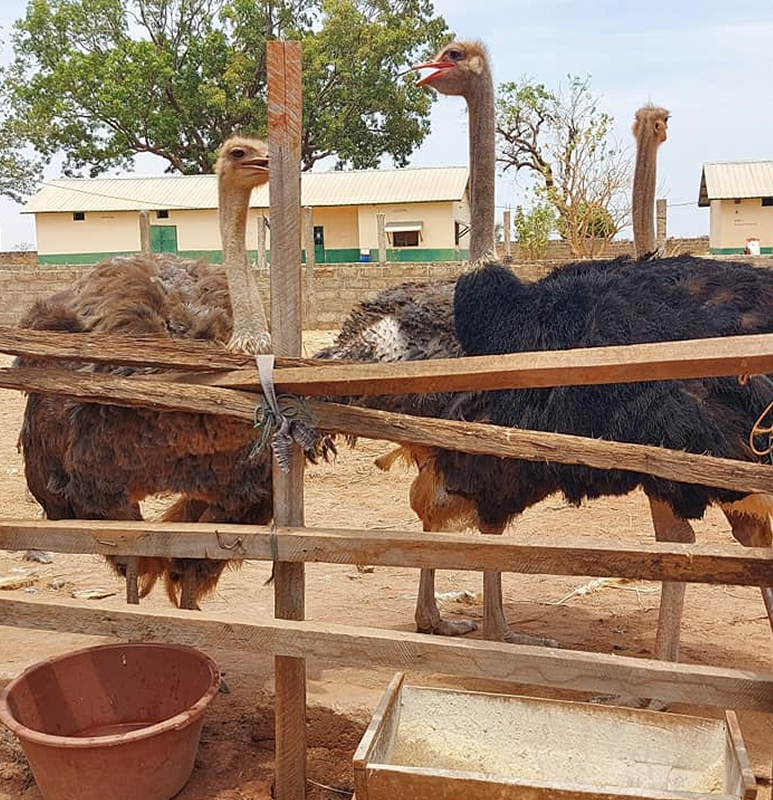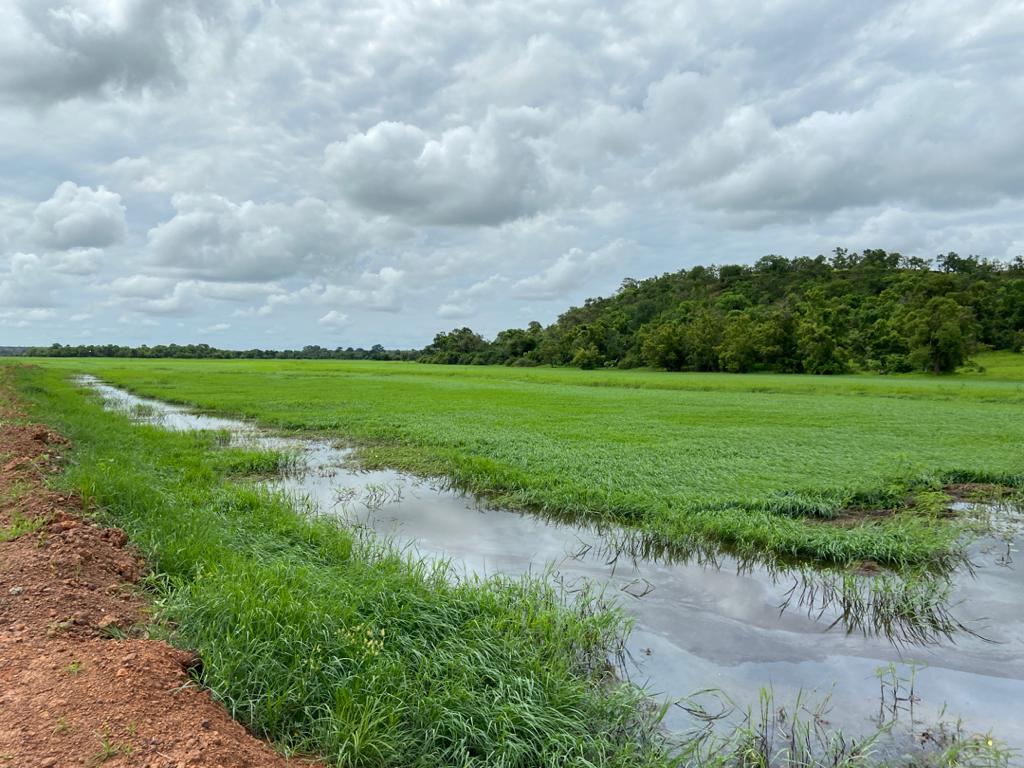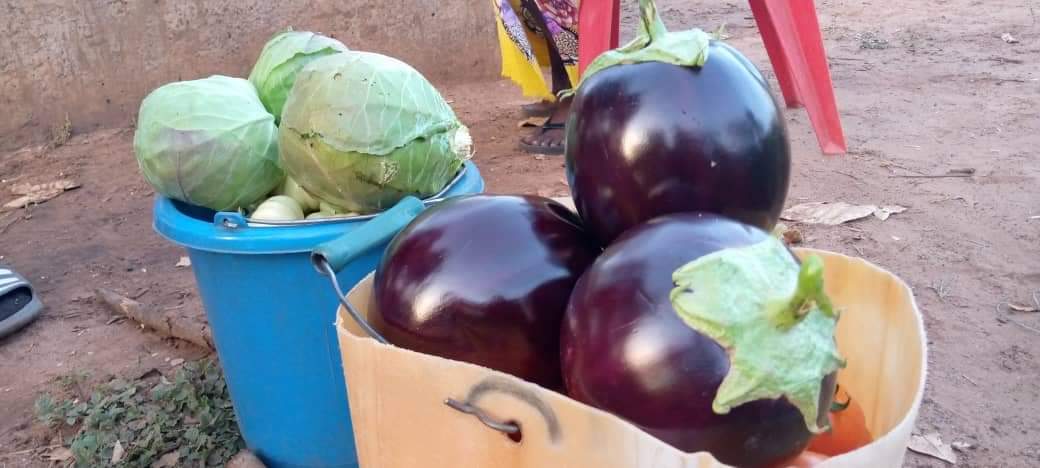Context and rationale
Political and socio-economic background: The Gambia is a country in transition since 2016 after a 22-year legacy of authoritarianism. It is currently one of the poorest countries in the world, and faces significant challenges related to food insecurity, malnutrition, migration, unemployment, and climate change.
Approximately 62 per cent of the population are poor and 48 per cent live below the poverty line of 1.25 USD per day. A griculture is the principal source of livelihood for the rural population. It provides employment for approximately 70 per cent of the population but contributes only 24 percent of the GDP.
Rural poverty, food insecurity and malnutrition are closely associated with low agricultural productivity, particularly in rain-fed systems, which affects the most vulnerable groups, namely women and youth. The annual 3.5 per cent GDP growth rate is insufficient to reduce poverty meaningfully.
The country is one of the most vulnerable countries to climate change because of its geographical location, characterised by high dependence on rain-fed agriculture and severe salt-water intrusion in the lowlands floodplain. The effects of climate change relative to rising sea level and reduced rainfall have increased saltwater intrusion to 150-200 km inland, thereby affecting crop yields. In addition, the country experienced severe droughts in 2011 and 2014, leading to a drop of crop output of 50 per cent. In 2016, the short rainy season led to a drop of crop production, boosting food price inflation.
The Government is addressing the main drivers of the country’s fragility, namely the structural fiscal and current account deficits, weak public services, high rates of population growth and outmigration of youth, in addition to low agricultural productivity and the negative impacts of climate change and environmental degradation. The Government has made food and nutrition security, as well as climate resilience, national priorities in the drive to the transition to a green economy driven by small and medium-sized (SME) private sector investments and delivering sustainable and inclusive benefits through the inclusion of youth and women as key economic actors. Within the context of the Comprehensive Africa Agricultural Development Programme (CAADP), the Government is preparing a new Gambia National Agricultural Investment Plan – Food and Nutrition Security (GNAIP-FS, 2017-2026). However, the country, on its own, has insufficient financial resources and technical capacity to build resilience for transformative smallholder agriculture.


The Government of The Gambia has committed to a stronger agricultural performance since the democratic transition and has asked IFAD to co-finance the Resilience of Organizations for Transformative Smallholder Agriculture Project (ROOTS). In addition, the Government has stressed the need to capitalize on the gains of the ongoing IFAD-funded National Agricultural Land and Water Management Development (NEMA) program.
ROOTS will build on the successes and draw lessons from IFAD-funded ongoing and past projects captured in the 2016 Country Programme Evaluation (CPE) namely:
(i) NEMA;
(ii) the Lowlands Agricultural Development Programme (LADEP);
(iii) the Participatory Integrated Watershed Management Project (PIWAMP);
(iv) the Rural Finance Project (RFP); and
(v) the Livestock and Horticulture Development Project (LHDP).
These investments have, since 2002, addressed the main constraints to the rice, livestock and horticulture value chains, as well as rural finance. ROOTS will consolidate the gains of these projects and build on other donor-sponsored investments. It will focus on upscaling NEMA achievements in the rice and vegetable value chains and contributing to the improvement of household food and nutrition security and farm incomes while transitioning smallholder armers (particularly youth and women) from subsistence to commercial entrepreneurs. The project will focus on women inasmuch as they are the main work force for vegetable and rice production. Finally, ROOTS will give special attention to key issues raised in the CPE such as the targeting strategy to reach poor farmers, deepening partnerships opportunities, project management performance and oversight for effective and efficient, and delivery mechanisms in the Government to enhance sustainability of benefits.
ROOTS will develop and consolidate rice production schemes and upgrade vegetable garden business models built under NEMA to produce surpluses, while mitigating potential risks along the rice and vegetable value chains in the context of climate change. The reason for choosing rice is the fact that The Gambia is a net importer of this staple food with a per capita consumption of 117kg per annum — about 106 per cent above the world average of 56.9kg — of which 83 per cent is imported. The current rice consumption is about 215,000 MT of which only 36,000 MT is produced locally and 179,000 MT is imported. As food security and nutritional adequacy requires vegetables to complement rice, the Project will support gardening to meet household demand but also a growing local market NEMA and other recently completed projects offer relevant lessons and evidence to continue investing in rice (average of 2.5 t/ha in lowlands against 0.7 t/ha baseline and 3 t/ha in tidal areas against 1.5 t/ha baseline) and vegetable gardens in the most vulnerable areas and communities. Most of the rice production systems along the Gambia River use tidal and gravity irrigation, which implies a low and competitive production cost.

Geographical Coverage
The Project will be implemented in five regions:
Kombo North, Kombo South, Kombo Central, Kombo East, Foni Brefet, Foni Bintang-Karanai, Foni Kansala, Foni Bondali, Foni Jarrol
Kiang East, Kiang Central, Kiang West, Jarra East, Jarra Central, Jarra West
Lower Niumi, Upper Niumi, Jokadu, Lower Baddibu, Central Baddibu, Upper Baddibu, Saba Sanjal
Lower Saloum, Upper Saloum, Nianija, Niani, Sami, Niamina West, Niamina Dankunku, Niamina East, Fuladdu West, Upper Fuladu
Jimara, Basse Fulladu East, Tumana, Kantora, Wuli East, Wuli West
The Target Group
The direct beneficiaries of the project are approximately 40,000 households, about 320,000 people (over 10 per cent of the population), of which 80 per cent are women and 25 per cent youth and persons with disabilities. These are smallholder farmers, microentrepreneurs in the rice and vegetable value chains.
The goal of the project is to improve food security, nutrition and smallholder farmers’ resilience to climate change in The Gambia.
Project Development Objective (PDO)
The Project Development Objective (PDO) is to increase agricultural productivity and access to markets for enhanced food security and nutrition, and resilience of family farms and farmer organizations.
Theory of Change
To achieve its objective, the project will support targeted investments in infrastructure, and the technical and organizational capacities of farmers’ organizations, particularly youth and women and other stakeholders along the rice and horticulture value chains. For these value chains, accessible markets exist domestically and regionally and productivity gains for food security and nutrition are achievable through the adoption of proven climate-smart technologies and practices and better access to markets. ROOTS will scale-up achievements from NEMA, while building synergies with other partners’ work geared towards increasing climate change resilience and value-chain development.
The approach will be based on:
(i) consolidation of NEMA’s investments;
(ii) sustained investments and support to women organization, youth producers and farmers’ organizations;
(iii) supporting value chain interaction platforms to enable Public-Private Producers’ Partnerships (4Ps);
(v) better access to financing;
(vi) mainstreaming environmental and climate, gender and nutrition in the interventions; and
(v) project management and delivery mechanisms to improve performance and enhance sustainability of benefits.


Components and expected outcomes
Component 1. Agricultural productivity and adaptation to climate change:
The expected outcome is “Improved smallholder farmers’ productivity through the adoption of sustainable and climate-resilient and nutrition-sensitive technologies and practices”.
Sub-component 1.1, the Project will:
(i) consolidate 1,300ha of existing poorly performing tidal irrigation and develop 2,800ha of new tidal irrigation on existing agricultural lands(average size per community land between 25 and 75ha);
(ii) develop 200ha new wet-season valley water control cascaded dykes;
(iii) develop 800ha new microcatchments runoff control dykes;
(iv) establish and strengthen Water User Management Units; and
(v) upgrade 20km of causeways to access 800harice-growing swampy areas.
In addition, the Project will upgrade 40 vegetable gardens and develop 30 new ones. Around the production sites, ecosystem preservation activities such as the rehabilitation of 1,300ha of mangroves and 1,400ha of community forests will be financed.
Sub-component 1.2 will support
(i) the access to various agricultural services (extension, input provision, financial education) with the focus on the promotion of Farmers’ Field Schools for rice and vegetables;
(ii) the emergence of 240 youth-led businesses that will mainly focus on the provision of services to the value chains; and
(iii) Capacity Development of Grassroots Farmers’ Organizations (FOs) so that they develop services for their members, particularly women-led farmers organizations.
Component 2. Access to markets:
The outcome of this component is “inclusive commercial partnerships between strengthened FOs and buyers through public-private producers’ partnerships”.
Sub-component 2.1 will focus on value chain and market linkages. It will finance:
(i) Agricultural Value-chain Interaction Platforms (AVIPs)– one rice AVIP and one vegetable AVIP will be established in each region targeted by the project with key value-chain stakeholders (producers, processors, traders, transporters) and the voice-based market information system introduced by NEMA will be scaled-up;
(ii) Capacity Development of the National Coordinating Organization for Farmer Association in The Gambia (NACOFAG) as well as the national commodity organizations of food processors, rice and vegetable growers; and
(iii) the construction of markets and roads.
Sub-component 2.2 will support business ideas of4Ps, particularly those focused on post-harvest and value addition elements. The Project will ensure that:
(i) FOs and SMEs prepare high-quality business plans with a particular focus on women-led FOs and SMEs; and
(ii) Matching Grant resources are efficiently mobilized and utilized. As a pilot, and after the mid-term review, matching grant funds will be blended with potential private capital from the Gambian diaspora; and
(iii) post-investment business support is available to sustain the 4Ps, through linking the SMEs to specialized business development services, including certification and food safety standard.
Component 3: Project management, institutional development, and citizen engagement. The objective is to facilitate:
(i) Efficient Coordination and Monitoring and Evaluation of project activities;
(ii) Knowledge Management, communication and learning;
(iii) Stakeholder Awareness and participation through timely and transparent communication of results and consistent citizen engagement; and
(iv) Policy Dialogue and South-South and Triangular Cooperation.
Costs and financing
The total cost of the Project is US$80 million for six years. Project costs by component are as follows:
(i) Component 1: US$3 million; and
(ii) Component 2: US$18.4 million.
The management and coordination expenses are US$8.3 million or about 10 per cent of the project costs. The project financing includes:
(i) an IFAD grant in accordance with the Debt Sustainability Framework for US$17.016 million (21.3 per cent);
(ii) an IFAD loan for US$4.254 million (5.3 per cent), including US$700 000 for the FIPS;
(iii) a GEF grant for US$5.3 million (6.6 percent);
(iv) an OFID loan for US$10 million (12.5 per cent);
(v) Ágence Francaise de Developpement (AFD) grants of US$11.17 million (14.0 per cent);
(vi) the Government of the Gambia for US$5.4 million from tax exemptions (6.8 per cent); and
(vii) beneficiaries for US$6.2 million (7.8 per cent).
The financial gap is estimated at US$20.6 million (corresponding to 25.7 per cent of the project costs) and could be covered from the IFAD12 allocation (subject to availability of funds, to financial conditions to be determined, and to internal procedures) or from other financiers to be identified.
Benefits
The financial analysis shows profitable investments with an Economic Internal Rate of Return of 16.3 percent and generating a net present value (at 6 percent discount rate) of US$37.1 million, including the environmental benefits (on a budget of US$80 million). The results are robust under various scenarios of implementation delays, reduced benefits and adoption. The economic analysis takes into account all aggregate benefits of the production activities, 4Ps and environmental co-benefits. The sensitivity analysis shows robust results in all scenarios using different risk levels.










